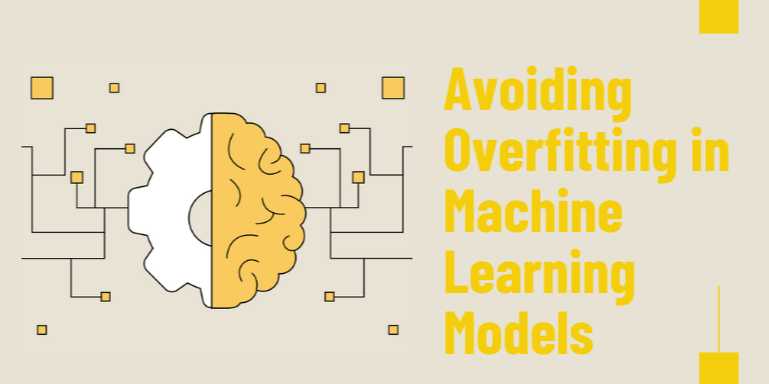Embark on a journey of knowledge! Take the quiz and earn valuable credits.
Take A QuizChallenge yourself and boost your learning! Start the quiz now to earn credits.
Take A QuizUnlock your potential! Begin the quiz, answer questions, and accumulate credits along the way.
Take A Quiz7 Proven Strategies to Avoid Overfitting in Machine Learning Models

📖 Chapter 4: Model Evaluation and Monitoring Tools
🧠 Introduction
Creating a machine learning model is only part of the
journey. The real challenge lies in evaluating its performance and monitoring
it over time to ensure it remains accurate, unbiased, and effective in
real-world scenarios. Misinterpreting model performance or failing to monitor
degradation can lead to costly errors, unreliable predictions, and operational
failures.
This chapter focuses on critical tools and techniques used
to evaluate machine learning models correctly, prevent overfitting or
underfitting, and implement ongoing model monitoring in production
environments. Whether you’re building models for research, business
intelligence, or real-time applications, mastering evaluation and monitoring is
non-negotiable for long-term success.
🎯 Goals of Model
Evaluation
- Assess
generalization to unseen data
- Detect
overfitting and underfitting
- Compare
performance across models
- Select
optimal models for deployment
- Ensure
long-term reliability in production
✅ 1. Evaluation Metrics: Choosing
the Right Score
Choosing an evaluation metric depends on the problem type —
classification, regression, clustering, or ranking.
🔍 For Classification
|
Metric |
Description |
Best Use Case |
|
Accuracy |
Ratio of correct
predictions |
Balanced binary
classification |
|
Precision |
True
Positives / (TP + FP) |
When false
positives are costly |
|
Recall |
True Positives / (TP +
FN) |
When false negatives
are costly |
|
F1 Score |
Harmonic mean
of precision and recall |
When balance
is important |
|
ROC-AUC |
Area under ROC curve |
Probabilistic models,
imbalanced data |
|
Log Loss |
Penalizes
overconfidence in predictions |
Probabilistic
classifiers |
🔢 For Regression
|
Metric |
Description |
Use Case |
|
MAE (Mean Absolute
Error) |
Average absolute
difference between actual and predicted values |
General regression
tasks |
|
MSE (Mean Squared Error) |
Squares error
terms; penalizes large errors |
Sensitive to
outliers |
|
RMSE (Root Mean
Squared Error) |
Square root of MSE;
more interpretable units |
Forecasting,
continuous targets |
|
R² Score (Coefficient of Determination) |
Proportion of
variance explained by the model |
Model fit
evaluation |
🧪 2. Validation
Techniques
Validation methods help simulate how the model performs on
unseen data.
Common validation strategies:
- Holdout
Validation: One-time split into train/test
- K-Fold
Cross-Validation: Rotate validation across k partitions
- Stratified
K-Fold: Preserves class distribution
- Leave-One-Out
(LOOCV): Extreme form of K-fold
- Time
Series Split: Preserves temporal order
Table: Comparison of Validation Strategies
|
Method |
Pros |
Cons |
|
Holdout |
Simple, fast |
Risk of biased split |
|
K-Fold |
Stable,
reduces variance |
More
computation |
|
Stratified K-Fold |
Better class
representation |
Complex to implement |
|
LOOCV |
Most
data-efficient |
Very slow |
|
Time Series Split |
Good for forecasting |
Cannot shuffle data |
📉 3. Learning and
Validation Curves
Learning curves plot model performance vs. training set
size. Validation curves plot performance across varying model parameters.
Benefits:
- Diagnose
underfitting or overfitting
- Determine
if more data will help
- Tune
hyperparameters effectively
Interpretation:
|
Curve Behavior |
Meaning |
Solution |
|
High bias |
Both train and val
accuracy low |
Simplify model |
|
High variance |
Train high,
val low |
Regularize or
get more data |
|
Converging curves |
Good generalization |
Stop training |
🔄 4. Confusion Matrix
Confusion matrices show how well your classification model
is predicting each class.
|
Predicted Positive |
Predicted Negative |
|
|
Actual Positive |
True Positive (TP) |
False Negative (FN) |
|
Actual Negative |
False
Positive (FP) |
True Negative
(TN) |
From the matrix, we derive:
- Accuracy
= (TP + TN) / Total
- Precision
= TP / (TP + FP)
- Recall
= TP / (TP + FN)
- F1
Score = 2 * (Precision * Recall) / (Precision + Recall)
📊 5. ROC Curve and AUC
The Receiver Operating Characteristic (ROC) curve
plots TPR vs. FPR across thresholds. The Area Under the Curve (AUC)
summarizes this as a single score.
- AUC
close to 1 = great classifier
- AUC
~0.5 = random guess
🔍 6. Monitoring Deployed
Models
Evaluation doesn’t stop at training. After deployment,
models must be monitored for drift and performance degradation.
What to monitor:
- Prediction
accuracy on fresh data
- Input
data drift (feature distribution changes)
- Concept
drift (relationship between X and y changes)
- Latency
and system performance
- Feedback
loops
|
Monitoring Metric |
What It Detects |
|
Accuracy decay |
Generalization issues |
|
Data distribution drift |
Model exposed
to new patterns |
|
Inference latency |
Infrastructure
bottlenecks |
|
User feedback trends |
Model
usability |
🔁 7. Tools for Evaluation
& Monitoring
Evaluation Tools
|
Tool |
Use Case |
|
Scikit-learn |
Metric evaluation, CV,
confusion matrix |
|
TensorBoard |
Monitor
neural network training |
|
MLflow |
Track experiments and
metrics |
|
Yellowbrick |
Visual
diagnostic tools |
Monitoring Tools
|
Tool |
Features |
|
Evidently AI |
Drift detection,
dashboards |
|
WhyLabs |
ML monitoring
with alerts |
|
Prometheus +
Grafana |
Infrastructure monitoring |
|
AWS SageMaker Model Monitor |
Production
monitoring |
🔄 8. Model Comparison
Techniques
To select the best model, compare them not only on accuracy
but on multiple metrics:
- Use boxplots
of k-fold scores to analyze variance
- Use pairwise
t-tests to confirm significance
- Create
leaderboards using experiment tracking
📈 9. Visualizations for
Better Insights
Effective visualization tools can help interpret model
behavior:
|
Chart Type |
Use Case |
|
ROC Curve |
Classification
threshold optimization |
|
Precision-Recall Curve |
Imbalanced
classification |
|
Learning Curve |
Diagnose
over/underfitting |
|
Feature Importance |
Model
interpretability |
|
SHAP/ LIME |
Explainability for
black-box models |
💬 10. Logging and Alerts
Models should log key performance metrics and trigger alerts
for:
- Sudden
drops in accuracy
- Input
schema changes
- Drift
thresholds breached
- Response
latency spikes
Set up alerts with:
- Slack/Email
integrations
- Grafana
dashboards
- PagerDuty
for ops teams
🧭 Best Practices Summary
- Always
split data into training, validation, and test sets
- Use
multiple evaluation metrics tailored to your problem
- Apply
cross-validation for model robustness
- Visualize
results to gain deeper insights
- Monitor
continuously in production
- Set
thresholds and alerts for automated warnings
🧾 Summary Table: Tools
& Metrics at a Glance
|
Category |
Tools/Metrics |
Purpose |
|
Classification |
Accuracy, F1, AUC,
Confusion Matrix |
Predictive performance |
|
Regression |
MAE, RMSE, R² |
Forecasting
quality |
|
Monitoring |
Evidently AI, MLflow,
WhyLabs |
Post-deployment drift
tracking |
|
Visualization |
ROC, SHAP,
Learning Curve |
Diagnosis
& explanation |
|
Comparison |
Cross-Validation,
t-tests, leaderboards |
Model selection |
FAQs
1. What is overfitting in machine learning?
Overfitting occurs when a model performs very well on
training data but fails to generalize to new, unseen data. It means the model
has learned not only the patterns but also the noise in the training dataset.
2. How do I know if my model is overfitting?
If your model has high accuracy on the training data but
significantly lower accuracy on the validation or test data, it's likely
overfitting. A large gap between training and validation loss is a key
indicator.
3. What are the most common causes of overfitting?
Common causes include using a model that is too complex,
training on too little data, training for too many epochs, and not using any
form of regularization or validation.
4. Can increasing the dataset size help reduce overfitting?
Yes, more data typically helps reduce overfitting by
providing a broader representation of the underlying distribution, which
improves the model's ability to generalize.
5. How does dropout prevent overfitting?
Dropout is a technique used in neural networks where
randomly selected neurons are ignored during training. This forces the network
to be more robust and less reliant on specific paths, improving generalization.
6. What is the difference between L1 and L2 regularization?
L1 regularization adds the absolute value of coefficients as
a penalty term to the loss function, encouraging sparsity. L2 adds the square
of the coefficients, penalizing large weights and helping reduce complexity.
7. When should I use early stopping?
Early stopping is useful when training models on iterative
methods like neural networks or boosting. You should use it when validation
performance starts to decline while training performance keeps improving.
8. Is overfitting only a problem in deep learning?
No, overfitting can occur in any machine learning algorithm
including decision trees, SVMs, and even linear regression, especially when the
model is too complex for the given dataset.
9. Can cross-validation detect overfitting?
Yes, cross-validation helps detect overfitting by evaluating
model performance across multiple train-test splits, offering a more reliable
picture of generalization performance.
10. How does feature selection relate to overfitting?
Removing irrelevant or redundant features reduces the
complexity of the model and can prevent it from learning noise, thus decreasing
the risk of overfitting.
Tutorials are for educational purposes only, with no guarantees of comprehensiveness or error-free content; TuteeHUB disclaims liability for outcomes from reliance on the materials, recommending verification with official sources for critical applications.
Jenani 2 months ago
Geeta parmar 4 months ago
Best tutorial I have foundGadgeturi faine 5 months ago
tutorial pe înțelesul tuturorGeeta parmar 4 months ago
Great to see you here!Explore Other Libraries
Please allow ads on our site
Kindly log in to use this feature. We’ll take you to the login page automatically.
Login
Join Our Community Today
Ready to take your education and career to the next level? Register today and join our growing community of learners and professionals.

Your experience on this site will be improved by allowing cookies. Read Cookie Policy
Your experience on this site will be improved by allowing cookies. Read Cookie Policy

Comments(3)